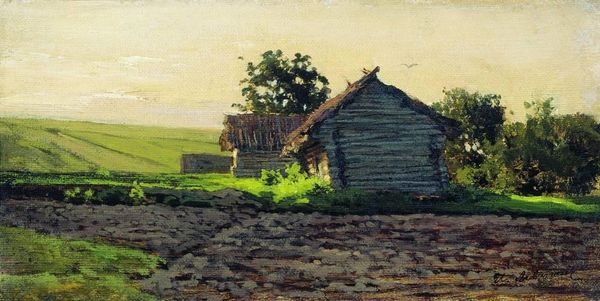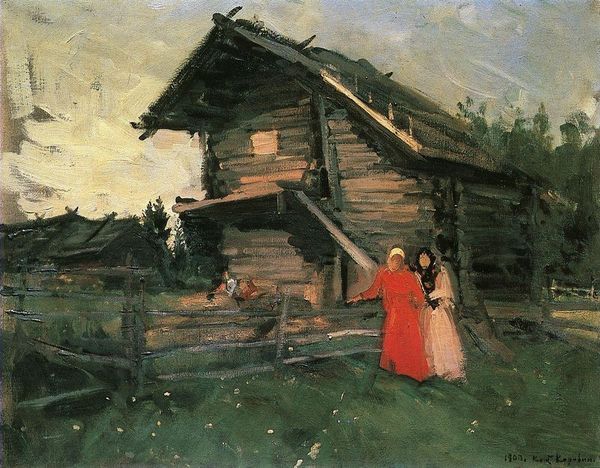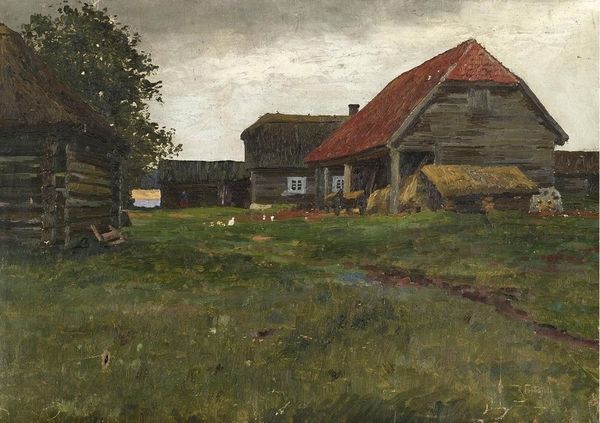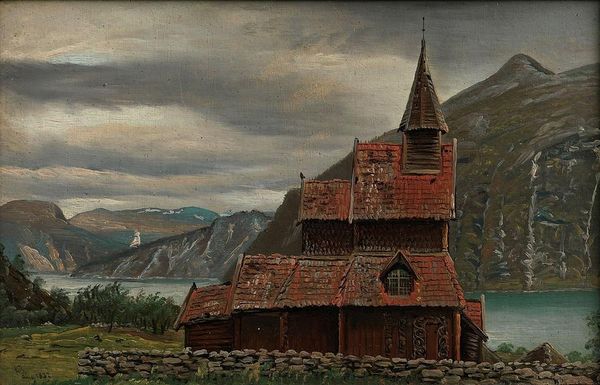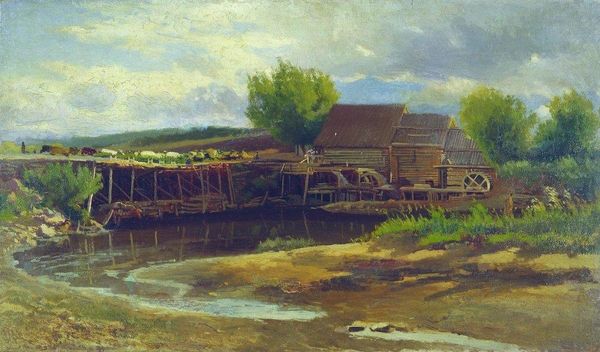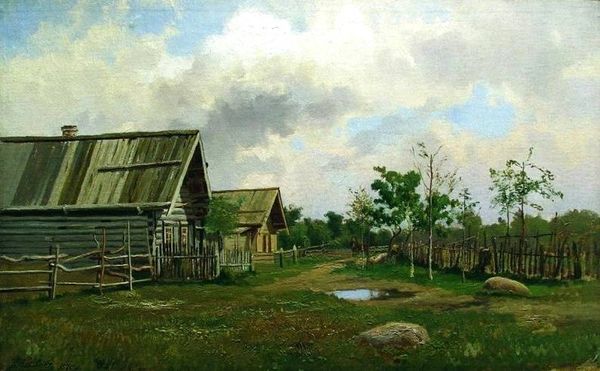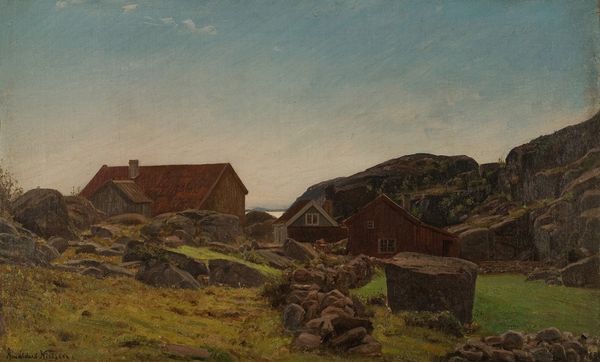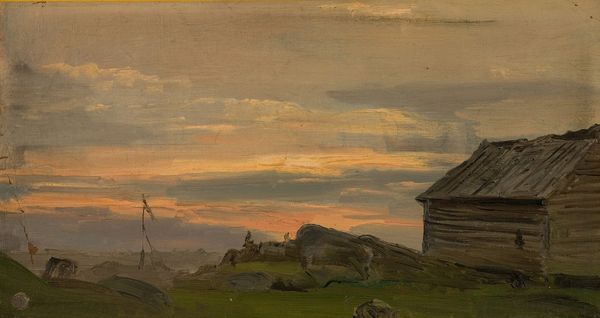
Copyright: Public domain
Isaac Levitan painted Church in Plyos using oil paints, applied with brushes onto a canvas. This was an established medium even by the late 19th century. Levitan's technique emphasizes the materiality of the paint itself. Notice the thick, visible brushstrokes that define the form of the wooden church. The rough texture of the paint creates a sense of depth and volume, as though the building is emerging from the landscape. The artist's choice to depict the humble church, rather than a grand cathedral, is also significant. It speaks to a growing interest in the lives of ordinary people, and a rejection of academic art traditions. He was part of the Peredvizhniki, a group of Russian realist artists focused on the social context of the Russian population. The painting’s material qualities contribute to its meaning, reflecting a shift in artistic values towards simplicity, honesty, and a celebration of national identity. It blurs the boundaries between fine art and the everyday, offering a glimpse into the soul of rural Russia.
Comments
No comments
Be the first to comment and join the conversation on the ultimate creative platform.


